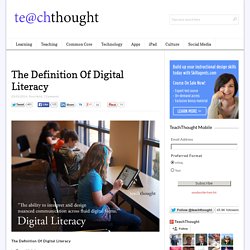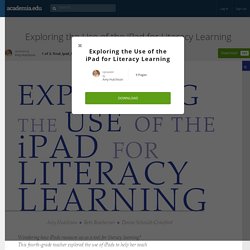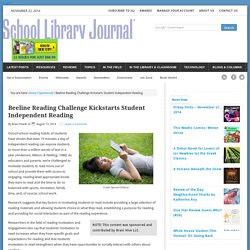

The Definition Of Digital Literacy. The Definition Of Digital Literacy by Terry Heick When we think of digital literacy, we usually think of research–finding, evaluating, and properly crediting digital sources.

The “research” connotation makes sense, as it is the sheer volume of sources and media forms on the “internet” that stand out. But we are living in a world where the internet is disappearing, replaced by sheer connectivity. Are you “on the internet” when you tweet? As the internet dissolves into something more seamless–that no longer requires a clunky web browser to make itself visible–we might adjust our perspectives in parallel. Take the idea of “literacy,” for example. Technology improves literacy only insofar as it improves a learner’s ability to identify, analyze, evaluate and create media. Literacy implies a fuller understanding and a rounder knowledge. This isn’t wrong so much as it focuses too much on technology and “the internet.” Flipping the Library: Tips from Three Pros. Through the use of innovative technologies and online resources, school libraries can now be available to students wherever—and whenever—they need them.

“Flipped” or blended learning offers students the power of personalized instruction, through a mix of virtual and face-to-face interactions, at a student’s own pace. Embracing this concept is a must for student engagement and the future of the profession, say school librarians Joyce Valenza, Brenda Boyer, and Michelle Luhtala. The powerhouse trio of experts shared their thoughts on the concept during “Flipped School Libraries,” a rapid-fire, dynamic session during The Digital Shift: Reinventing Libraries (#TDS13) webcast on October 16, in which they exchanged tips, inspiration, motivation, and their favorite tech tools.
“The library has to be flipped. In the classroom, Valenza notes, the flipped model frees up time to be used interactively on problem-based learning, and turns the 100-plus-year-old instruction model on its head. Exploring the Use of the iPad for Literacy Learning. EXPLORING THE USE OF THE iPAD FOR LITERACY LEARNING The Reading Teacher Vol. 66 Issue 1 September 2012 this technology, with its affordances and constraints, can influence student learning.

New literacies (Coiro, Knobel, Lankshear, & Leu, 2008), to read and navigate them. Integrating Digital Technologies IRA (2009) issued a position statement asserting that: to become fully literate in today’s world, students must become proficient in the new literacies of 21st-century technologies. Thus integrating digital technologies into literacy instruction and equipping students with the new literacy skills needed for reading, writing, and communicating in digital environments is already a priority for many literacy teachers (Hutchison & Reinking, 2011). Pause and Ponder Think of a prereading or reading response activity that your students have done recently with paper and pencil. How does the use of an iPad, or similar tablet, as a response tool encourage differentiated instruction? NMC Horizon Report > 2014 Library Edition. Login or Create New Account Member Spotlights RIT Launches Nation’s First Minor in Free and Open Source Software and Free Culture Partner News.

Beeline Reading Challenge Kickstarts Student Independent Reading. Credit: Sjenner13/iStock Out-of-school reading habits of students have shown that even 15 minutes a day of independent reading can expose students to more than a million words of text in a year (Anderson, Wilson, & Fielding, 1988).

As educators and parents, we’re challenged to motivate students to read more out of school and provide them with access to engaging, reading-level appropriate books they want to read and the time to do so balanced with sports, recreation, family time, and, of course, school work. Research suggests that key factors in motivating students to read include providing a large selection of reading materials and allowing students choice in what they read, establishing a purpose for reading, and providing for social interaction as part of the reading experience. NOTE: This content was sponsored and contributed by Brain Hive LLC. What Digital Literacy Looks Like in a Classroom - Education Week Teacher.